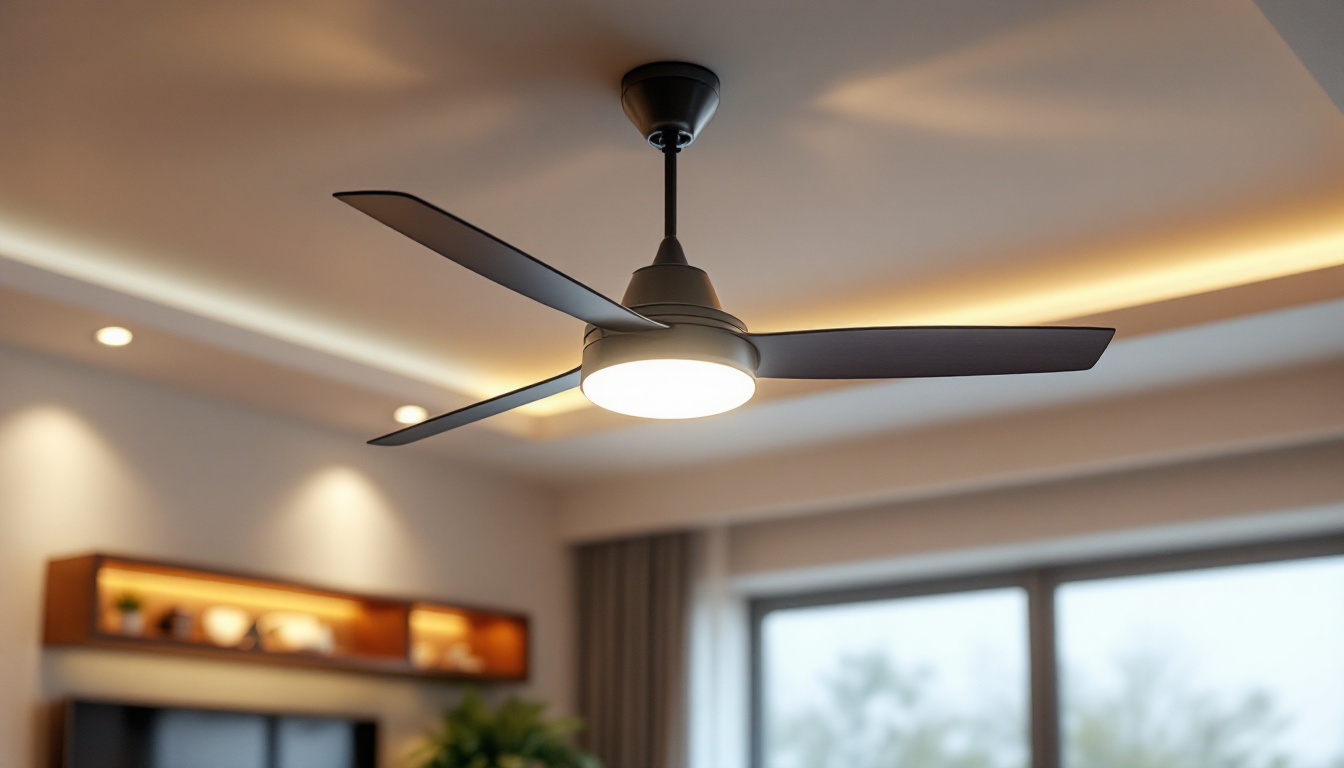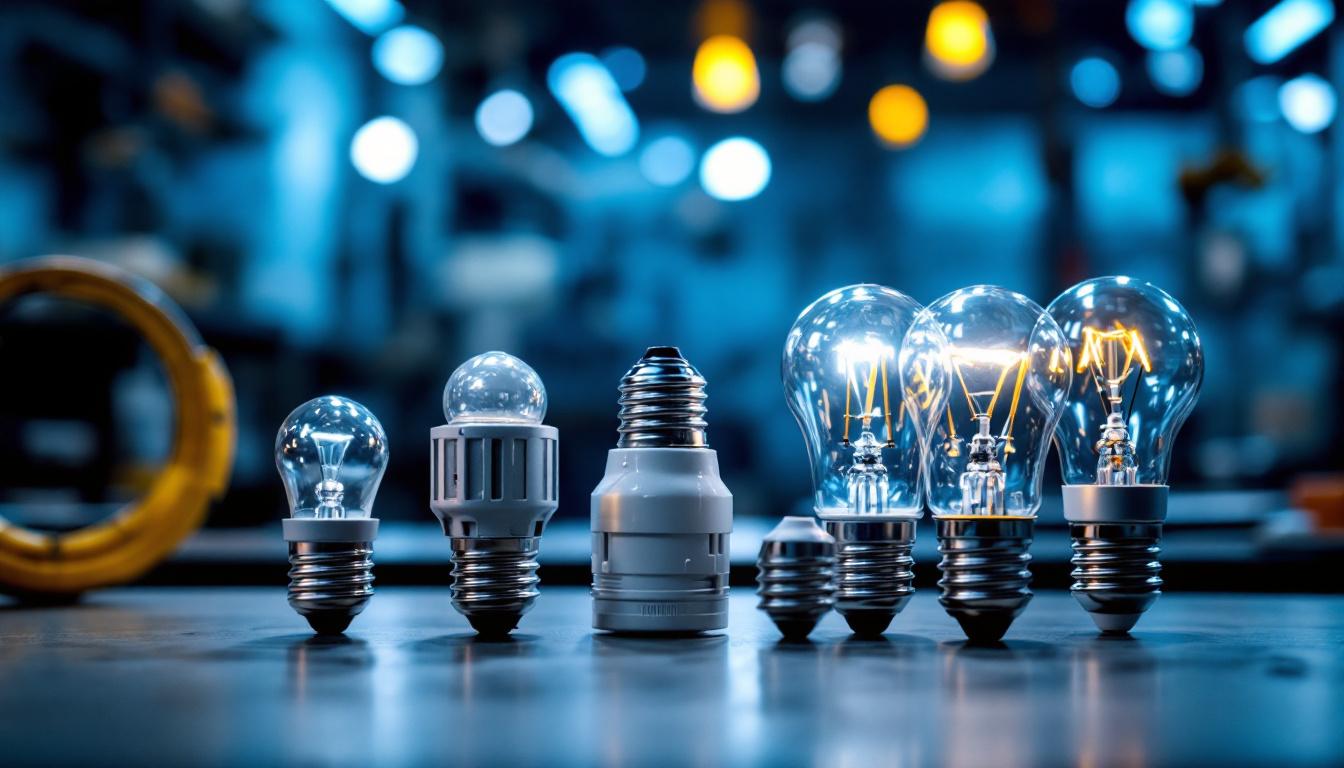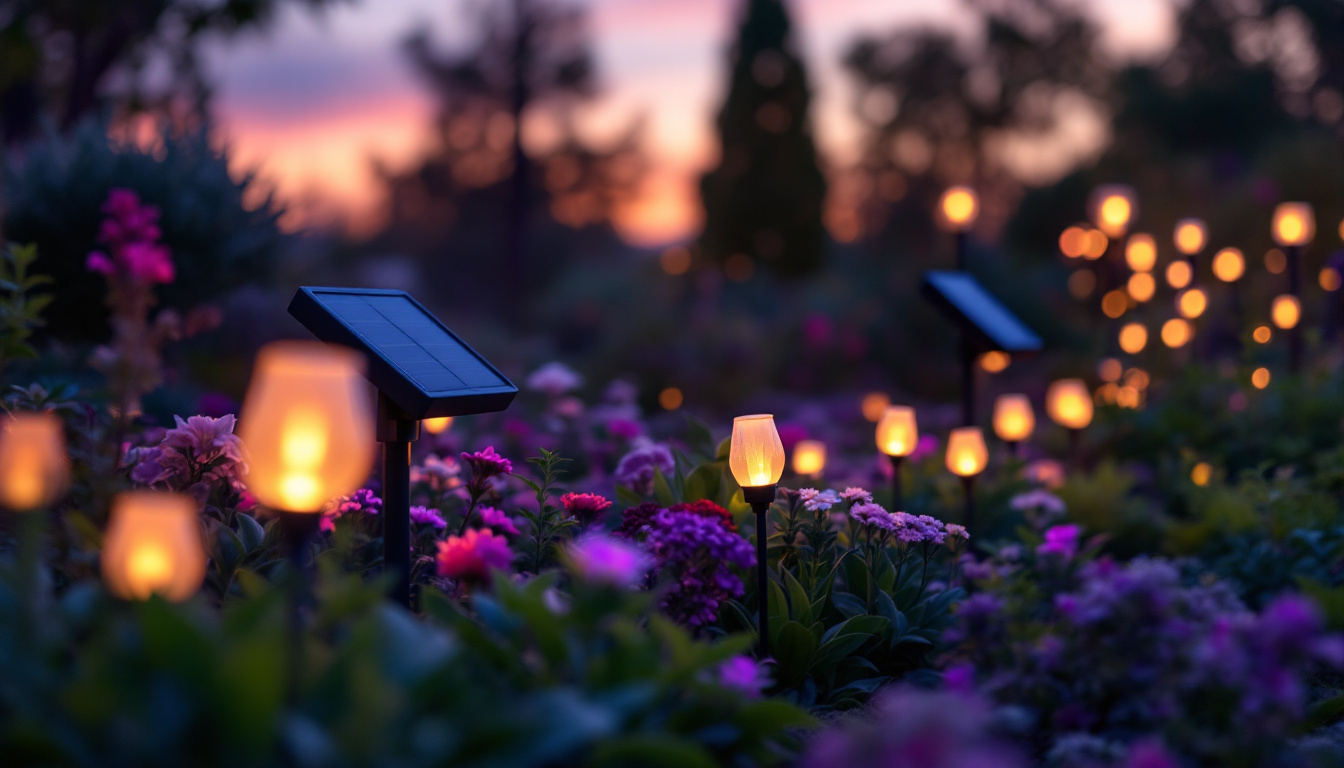
As the demand for energy-efficient and aesthetically pleasing lighting solutions continues to grow, understanding the science behind light fixtures, particularly ceiling fans, has become essential for lighting contractors. This article delves into the intricate relationship between lighting and ventilation, offering insights into how ceiling fans can enhance both functionality and ambiance in various settings.
Ceiling fans have long been a staple in residential and commercial spaces, serving the dual purpose of providing airflow and illumination. Their design typically includes blades that rotate to create a wind-chill effect, which can help reduce the perceived temperature in a room. However, the integration of light fixtures into ceiling fans adds another layer of complexity and functionality. Beyond just comfort, ceiling fans can also enhance the aesthetic appeal of a room, with designs ranging from sleek and modern to ornate and traditional, making them versatile additions to any decor style.
In addition to their practical uses, ceiling fans can also contribute to energy savings. By circulating air effectively, they can reduce the reliance on air conditioning during warmer months, leading to lower energy bills. In colder months, many ceiling fans can be reversed to push warm air down from the ceiling, providing year-round utility. This dual functionality not only enhances comfort but also promotes a more sustainable approach to home heating and cooling.
Understanding the components of a ceiling fan is crucial for lighting contractors. A typical ceiling fan consists of several key parts: the motor, blades, light kit, and pull chain or remote control. The motor is the heart of the fan, responsible for spinning the blades at various speeds, while the blades are designed to maximize airflow efficiency. The size and pitch of the blades can significantly influence the fan’s performance, with steeper pitches generally providing more airflow, making it essential for contractors to select the right fan for the specific needs of a space.
The light kit, which can be integrated into the fan’s design, often includes different types of bulbs, such as incandescent, CFL, or LED. Each type of bulb has its own characteristics in terms of brightness, energy consumption, and color temperature, making it essential for contractors to understand their implications for both lighting and energy efficiency. Furthermore, the design and placement of the light fixtures can impact the overall illumination of the room, necessitating careful consideration during installation to ensure that the light is distributed evenly and effectively.
Ceiling fans can accommodate a variety of light fixtures, each offering unique benefits. Traditional incandescent bulbs provide warm light but are less energy-efficient compared to newer technologies. Compact fluorescent lamps (CFLs) offer better energy savings but may not be suitable for all dimming applications. Additionally, the physical size and shape of the light fixtures can vary, affecting how they blend with the fan’s overall design and the room’s decor.
LEDs have emerged as the preferred choice for modern ceiling fans. They are energy-efficient, have a long lifespan, and come in a variety of color temperatures, allowing for greater customization of the lighting atmosphere. Understanding the compatibility of these light fixtures with ceiling fans is crucial for contractors aiming to deliver optimal solutions to their clients. Moreover, advancements in smart technology have led to the development of smart ceiling fans that can be controlled via smartphone apps or voice commands, integrating seamlessly into modern smart home systems. This evolution not only enhances convenience but also allows for programmable settings, further optimizing energy use and comfort in any space.
Illumination is not merely about brightness; it involves understanding how light interacts with the environment. Factors such as color temperature, lumens, and the distribution of light play significant roles in creating the desired atmosphere in a space.
Color temperature, measured in Kelvin (K), indicates the warmth or coolness of light emitted by a bulb. Lower Kelvin values (2700K-3000K) produce warm, inviting light, ideal for living spaces. In contrast, higher values (4000K-5000K) emit cooler, more energizing light, suitable for workspaces or kitchens.
Lighting contractors must consider the intended use of a room when selecting the appropriate color temperature for ceiling fan light fixtures. For instance, a cozy reading nook may benefit from warmer tones, while a home office may require cooler, more focused lighting.
Lumens measure the total amount of visible light emitted by a source. When selecting light fixtures for ceiling fans, contractors should assess the lumens required for the specific application. Different rooms have varying brightness needs; for example, a dining room may require around 300-500 lumens, while a bathroom might need 500-800 lumens for adequate visibility.
Understanding lumens also aids in achieving a balanced lighting design. Overly bright fixtures can create glare, while insufficient lighting can lead to dim, uninviting spaces. Properly calculating the lumens needed for each area ensures that the ceiling fan light fixtures enhance the overall environment.
As energy costs rise and environmental concerns become more pressing, energy efficiency in lighting has gained paramount importance. Ceiling fans with integrated light fixtures can significantly contribute to energy savings when chosen wisely.
When selecting light fixtures for ceiling fans, contractors should prioritize energy-efficient options. LEDs, for instance, consume significantly less energy than incandescent or CFL bulbs while providing comparable or superior brightness levels. Additionally, LEDs have a longer lifespan, reducing the frequency of replacements and maintenance.
Moreover, many ceiling fans now come equipped with energy-efficient motors, which can further enhance overall energy savings. Understanding the energy ratings and certifications of both the fan and the light fixtures is essential for contractors aiming to provide sustainable solutions.
The advent of smart technology has revolutionized the way lighting is controlled. Many modern ceiling fans come with smart capabilities, allowing users to adjust fan speeds and light settings through mobile apps or voice commands. This integration not only adds convenience but also enables users to optimize energy consumption based on their specific needs.
For lighting contractors, understanding the various smart technologies available and how they interact with ceiling fans is crucial. Offering clients smart solutions can enhance their overall experience and satisfaction with the product.
Proper installation of ceiling fans with light fixtures is vital for safety and functionality. Contractors must adhere to specific guidelines to ensure that the installation meets local codes and regulations.
Ceiling fans can be mounted in various ways, including flush mounts, downrods, or angled mounts. The choice of mounting option depends on the ceiling height and the desired aesthetic. For instance, flush mounts are ideal for low ceilings, while downrods are suitable for higher ceilings, allowing for optimal airflow and light distribution.
Contractors should also consider the weight and size of the ceiling fan and light fixture combination. Ensuring that the mounting hardware is appropriate for the weight of the fan is crucial for safety and performance.
Electrical wiring is another critical aspect of ceiling fan installation. Contractors must ensure that the electrical box is rated to support the weight of the fan and light fixture. Additionally, proper wiring techniques must be followed to prevent electrical hazards.
It is also important to educate clients about the importance of using compatible dimmer switches if they plan to incorporate dimmable bulbs. Not all dimmer switches work with LED technology, and using incompatible switches can lead to flickering or reduced bulb lifespan.
Regular maintenance is essential for ensuring the longevity and performance of ceiling fans with light fixtures. Lighting contractors should provide clients with guidelines on how to care for their installations.
Ceiling fans can accumulate dust and grime over time, which can affect both airflow and light quality. Contractors should recommend that clients clean their fans regularly, using a soft cloth or duster to remove dust from the blades and light fixtures. It is advisable to turn off the fan and light before cleaning to ensure safety.
For light fixtures, contractors should advise clients to check for any burnt-out bulbs and replace them promptly. This not only maintains the aesthetic appeal but also ensures that the fan operates at optimal brightness levels.
Encouraging clients to conduct periodic inspections of their ceiling fans can help identify any potential issues early on. This includes checking for loose screws, wobbling blades, or unusual noises during operation. Addressing these concerns promptly can prevent more significant problems down the line.
Additionally, contractors should remind clients to monitor the performance of their light fixtures. If they notice flickering or dimming, it may indicate a need for bulb replacement or electrical issues that require professional attention.
Understanding the science behind light fixtures and ceiling fans is essential for lighting contractors aiming to deliver exceptional service and solutions. By grasping the intricacies of illumination, energy efficiency, installation, and maintenance, contractors can provide clients with informed recommendations that enhance both functionality and aesthetics.
As the industry evolves, staying updated on the latest technologies and trends will empower contractors to meet the growing demands of their clients. Ultimately, a well-informed contractor can create spaces that are not only beautifully illuminated but also energy-efficient and sustainable.
Ready to elevate your lighting installations with the perfect blend of quality, affordability, and convenience? Look no further than LumenWholesale. We offer contractors top-quality, spec-grade lighting products at unbeatable wholesale prices, ensuring you get the most value for every project. Say goodbye to inflated markups and hello to a vast selection of reliable, high-performance lighting that meets the highest industry standards. Plus, with free shipping on bulk orders, you can stock up on premium lighting without any hidden fees or compromises. Don’t miss out on the opportunity to enhance your service offerings with energy-efficient and sustainable lighting solutions. Visit LumenWholesale today for Wholesale Lighting at the Best Value and make your next project shine!

Discover the essential guide to standard bulb socket types with insights from expert lighting contractors.

Discover the transformative impact of solar-powered garden lights for lighting contractors.

Discover the transformative power of tape lighting under cabinets with real-world success stories from lighting contractors.

Discover why barn style lights are becoming a staple for lighting contractors.